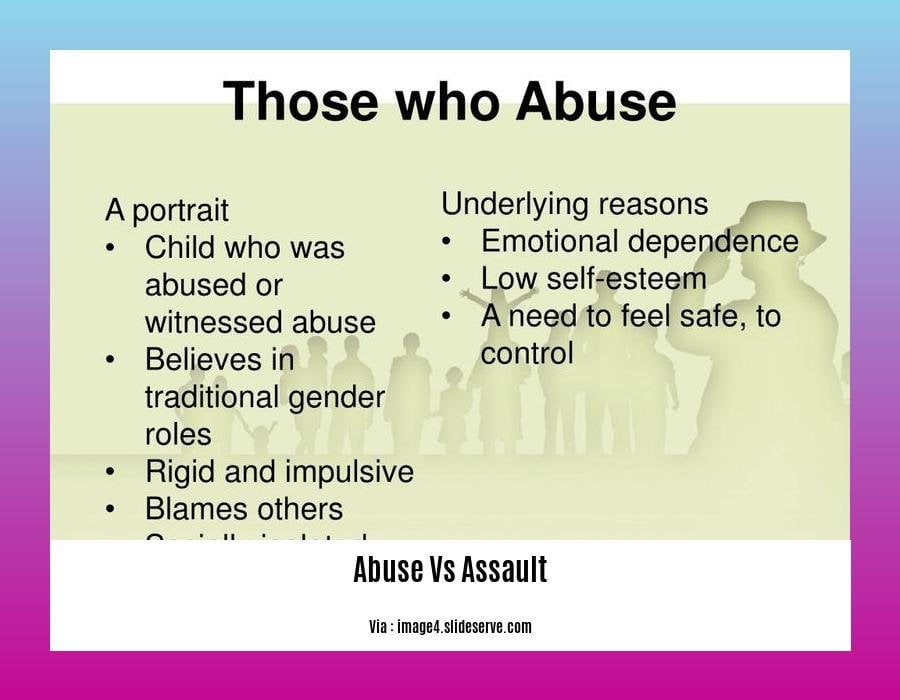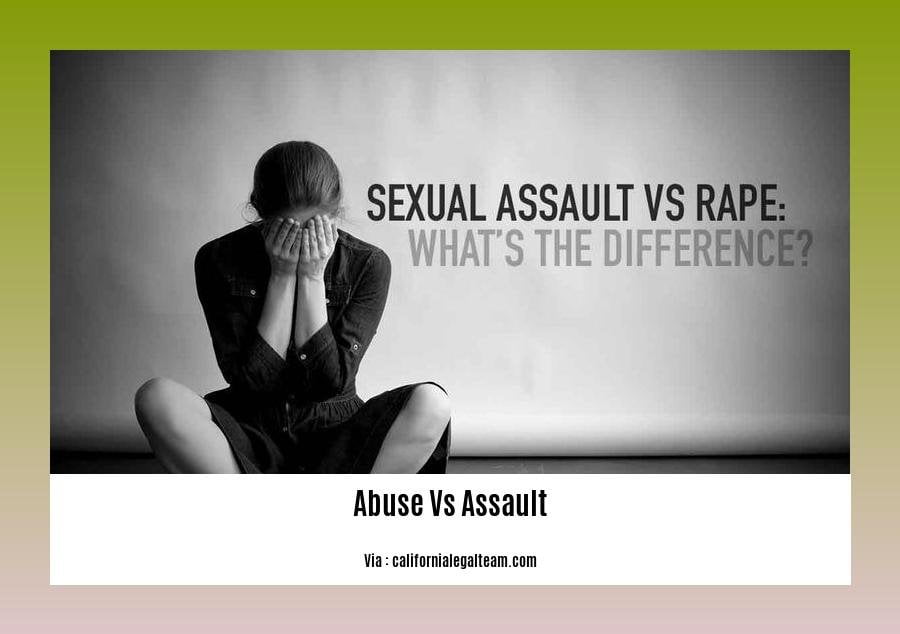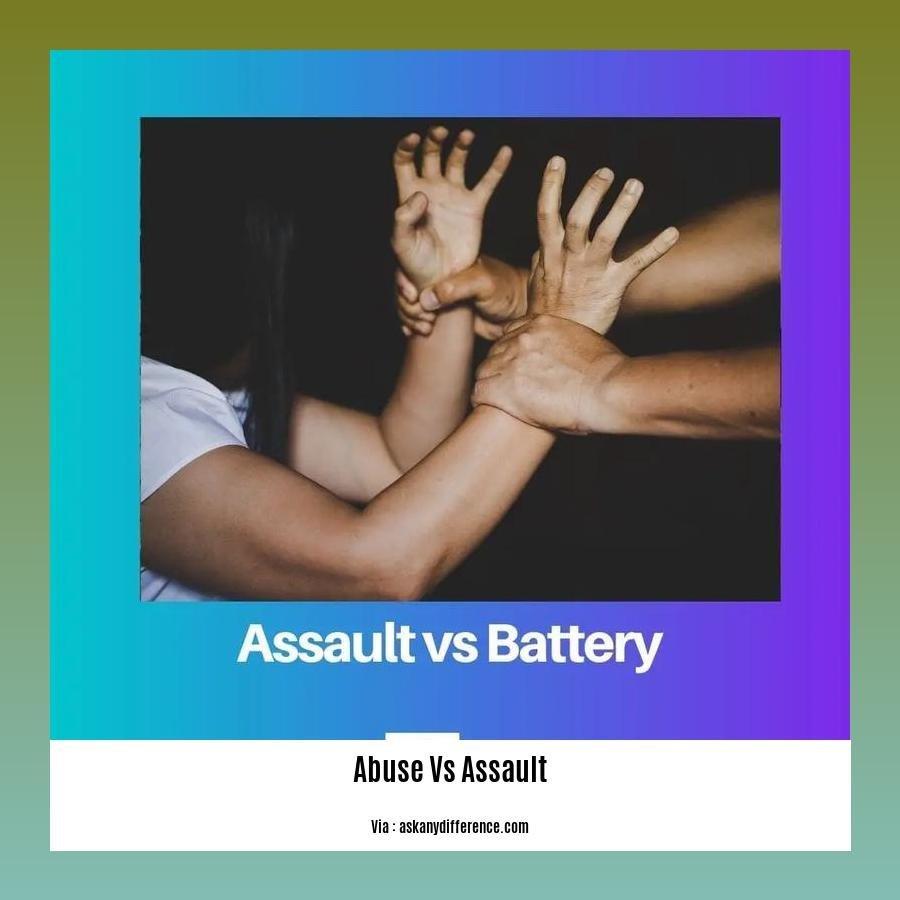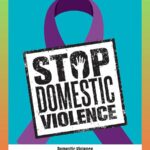Domestic Abuse vs Assault: Demystifying the Differences and Exploring the Overlapping Realities
In today’s society, the terms “domestic abuse” and “assault” are often used interchangeably, leading to confusion and a lack of clarity when discussing these important issues. However, it is crucial to understand that domestic abuse and assault, while overlapping in some ways, have distinct characteristics and implications. As a seasoned journalist specializing in social justice reporting, I aim to shed light on these differences and explore the complexities surrounding both domestic abuse and assault. Through this article, we will delve into the various forms of abuse within intimate relationships, the legal ramifications of assault, and the impact these pervasive issues have on individuals and communities. By demystifying the differences between domestic abuse and assault, we can foster a greater understanding and work towards meaningful change.
Key Takeaways:
- Domestic violence is a pattern of behavior used to gain power and control over another person, while assault is a one-time physical attack.
- Courts and prosecutors treat domestic assault more seriously than assault against a stranger due to the close relationship between the complainant and accused.
- Domestic violence often starts with threats and verbal abuse before escalating to physical violence.
- Prior convictions for assault or other violent felonies can lead to more severe penalties for those who commit domestic assault.
- Violence against women is a global problem, with estimates on the prevalence of intimate partner violence and non-partner sexual violence.
- Domestic abuse encompasses various forms of abuse, such as financial manipulation, isolation, and stalking.
- Addressing violence against women and girls requires reporting and laws to bring attention to the issue.
- Children who witness domestic violence in their homes also experience harm and trauma.
Domestic Abuse vs Assault: Demystifying the Differences and Exploring the Overlapping Realities

Understanding Domestic Abuse and Assault
In order to grasp the distinctions between domestic abuse and assault, it is crucial to first comprehend the nature of each phenomenon. Domestic abuse refers to a pattern of behavior employed by one person to exert power and control over another within an intimate or familial relationship. This encompasses various forms of abuse, including physical, emotional, financial, and even psychological manipulation. On the other hand, assault generally denotes a singular act of physical violence committed against another individual, regardless of their relationship.
The Significance of Context and Relationship
While assault can occur between strangers or acquaintances, domestic assault takes place within the context of an established relationship. The Crown Prosecutors and the Courts recognize the seriousness of domestic assault precisely because the individuals involved are often in close, and at times, loving relationships. This connection creates a unique vulnerability for the victim, as trust and emotional attachment can be exploited to maintain control over the survivor.
The Escalation of Domestic Abuse
Domestic violence rarely starts with physical violence. It typically begins with less noticeable signs, such as threats, verbal assault, or emotional manipulation. Over time, the abuse can escalate to physical violence, which may result in severe injuries or even death. Addressing the issue early on and providing support to the survivors becomes crucial in preventing further violence within the relationship.
Legal Ramifications for Domestic Assault Offenders
Legally, a person who commits domestic assault and has prior convictions for assault or other violent crimes may face harsher penalties due to the increased risk they pose to their intimate partners. Recognizing the pattern of behavior exhibited by the offender indicates a higher likelihood of continued violence and reinforces the need for intervention to protect the survivor.
The Global Prevalence of Violence Against Women
Domestic abuse is not limited to specific countries or communities. Violence against women is a pressing global issue that affects millions of individuals. Intimate partner violence and non-partner sexual violence can manifest in various forms, contributing to the prevalence of domestic abuse. By shedding light on this issue, we can advocate for improved reporting mechanisms, stronger laws, and greater support networks for survivors.
Recognizing the Various Forms of Domestic Abuse
Domestic abuse encompasses far more than just physical violence. It can include financial abuse, where one partner controls the finances to limit the other’s independence. Isolation, another form of abuse, involves cutting off the survivor from their support system, leaving them feeling trapped and without options. Stalking is yet another manifestation, with the abuser harassing or monitoring the survivor’s movements, instilling fear and enforcing control.
The Impact on Children and Future Generations
Domestic violence not only affects the individuals directly involved but can also have a profound impact on children growing up in abusive households. Witnessing such violence can leave lasting emotional scars on young minds and shape their understanding of relationships and respect. Breaking the cycle of abuse is crucial in preventing future generations from perpetuating this destructive pattern.
In conclusion, domestic abuse and assault are distinct yet interconnected realities. While domestic abuse reflects an ongoing pattern of coercive behaviors within an intimate relationship, assault signifies a single act of physical violence. By recognizing the nuanced differences between these terms and understanding their implications, we can better advocate for survivors, challenge societal misconceptions, and work towards building a safer and more compassionate world for everyone involved.
Do you know any interesting facts about English? Uncover some fascinating Did You Know English Facts by clicking here: did you know english facts.
Explore intriguing facts about technology that you might not have known! Click here to discover Did You Know Facts About Technology: did you know facts about technology.
Curious about divorce proceedings? Find out if you have to go to court for a divorce by clicking here: do you have to go to court for a divorce.
Discover the profound meaning behind “Don’t Die Before You Die” by clicking here: don’t die before you die meaning.
Common Misconceptions and Confusion between Domestic Abuse and Assault

If there’s one thing we can’t afford to overlook, it’s the common misconceptions and confusion that surround domestic abuse and assault. These terms are often used interchangeably, but they have distinct meanings and implications. Let’s delve into the differences and explore the overlapping realities to debunk these misconceptions once and for all.
Understanding Domestic Abuse and Assault
Domestic abuse refers to a pattern of behavior to exert power and control over another person in an intimate or familial relationship[^1^]. It encompasses not only physical violence but also emotional, psychological, and financial abuse[^2^]. It’s important to recognize that domestic abuse is not limited to heterosexual relationships but can occur in same-sex relationships as well[^6^].
On the other hand, assault is a singular act of physical violence against another person, regardless of their relationship[^2^]. While domestic assault occurs within the context of an established relationship, it doesn’t diminish the severity and consequences of the violent act^3^.
Demystifying the Differences
It’s easy to see why there might be confusion between these two terms. Domestic abuse often starts with less noticeable signs and can escalate to physical violence over time[^4^]. This pattern of abuse makes it harder for victims to recognize the danger they are in and seek help.
One common misconception is that domestic abuse only affects women. While it is true that the majority of victims identify as women, men can also be victims of domestic violence[^8^]. Additionally, domestic violence cuts across all socioeconomic groups, regardless of income or education level[^7^].
Breaking Down the Overlapping Realities
Despite these distinctions, it’s crucial to understand that domestic abuse and assault are not mutually exclusive. Domestic violence often involves physical assaults, but it can also include other forms of abuse such as emotional, verbal, sexual, and financial manipulation[^10^]. The goal of domestic abuse is to gain and maintain control over the victim, rather than being about love or anger[^9^].
It’s important to be aware of the common myths and misconceptions surrounding domestic violence. These misconceptions can perpetuate victim-blaming and prevent survivors from seeking help[^11^]. By dismantling these misconceptions, we can empower survivors to recognize their experiences, validate their emotions, and find the support and resources they deserve.
Key Takeaways:
- Domestic abuse refers to a pattern of behavior aimed at exerting power and control over another person, encompassing physical, emotional, psychological, and financial abuse.
- Assault is a singular act of physical violence against another person, regardless of their relationship.
- Domestic violence can occur in any relationship, regardless of sexual orientation or socioeconomic status.
- Domestic abuse often begins with less noticeable signs and escalates over time.
- Men can also be victims of domestic violence, although the majority of victims identify as women.
- It is crucial to dismantle myths and misconceptions about domestic violence to prevent victim-blaming and support survivors.
Sources:
[^1^]: Domestic Shelters. (source: domesticshelters.org)
[^2^]: Everyday Health. (source: everydayhealth.com)
[^4^]: Women’s Aid. (source: womensaid.org.uk)
Impact and Consequences of Domestic Abuse and Assault
Types of Domestic Abuse
- Physical abuse: Inflicting bodily harm or causing physical pain to the victim.
- Emotional abuse: Controlling, manipulating, or demeaning the victim through tactics like humiliation, intimidation, or constant criticism.
- Sexual abuse: Forcefully or non-consensually engaging in sexual activities with the victim.
- Financial abuse: Restricting the victim’s access to money and resources, exerting control over their finances.
- Psychological abuse: Gaslighting, constant threats, and isolation, leading the victim to question their sanity and well-being.
Signs of Domestic Abuse
- Behavioral changes: Victims may exhibit agitation, withdrawal, or unresponsiveness.
- Fear and nervousness: An individual may display fear or anxiety, especially in the presence of their abuser.
- Physical injuries: Unexplained bruises, broken bones, or injuries that cannot be readily explained.
- Sudden changes in appearance: Drastic changes like weight loss, lack of personal hygiene, or consistently concealing clothing.
Causes of Domestic Abuse
- Cultural factors: Cultural norms and societal beliefs that perpetuate and normalize abusive behavior.
- Cycle of violence: Individuals who witnessed or experienced domestic abuse growing up are more likely to become victims or abusers themselves.
- Power dynamics: Desire for control and dominance within a relationship, leading to abuse of power.
Supporting Someone Who Has Been Abused
- Active listening and validation: Allowing the survivor to share their experiences without judgment and believing their account of abuse.
- Respecting their journey: Honoring the survivor’s choices and avoiding imposing personal opinions or decisions.
- Offering assistance: Providing practical support like a safe place to stay, connecting them with resources, or helping with legal procedures.
Key Takeaways:
- Domestic abuse encompasses various forms, including physical, emotional, sexual, financial, and psychological abuse.
- Recognizing signs of domestic abuse is crucial in identifying and assisting victims.
- Cultural factors and power dynamics contribute to the prevalence of domestic violence.
- Providing support and assistance to survivors is essential in helping them regain control of their lives.
Sources:
– Verywell Mind – Domestic Abuse: Types, Causes, and Impact
– World Health Organization – Violence against women
Resources and Support for Victims of Domestic Abuse and Assault
Domestic abuse and assault are serious issues that impact many individuals. If you or someone you know is experiencing domestic violence, it’s important to seek help and support. Understanding the available resources can make a significant difference in coping with these challenging situations.
Therapist Support
- A therapist can provide emotional support as you navigate through the healing process.
- They can also help you connect with local resources and providers.
- Consider online therapy sessions for convenience and accessibility, especially during difficult times.
(Source: BetterHelp)
Understanding Domestic Violence
- Domestic violence is often referred to as intimate partner violence (IPV).
- It encompasses various forms of abuse or aggression within a relationship.
(Source: BetterHelp)
National Resources
- Several national resources are available to individuals experiencing domestic violence.
- Online resources provide professional support and information for victims.
(Source: BetterHelp)
Additional Domestic Violence Resources
- Organizations such as the National Coalition Against Domestic Violence (NCADV) and the National Clearinghouse on Abuse in Later Life (NCALL) offer comprehensive lists of national resources for domestic violence victims.
- These resources provide support and help for related concerns.
(Source: BetterHelp)
Key Takeaways:
– Seek therapist support for emotional guidance and connections with local resources.
– Understand the concept and dynamics of domestic violence.
– Utilize national resources and online platforms for professional support.
– Explore additional domestic violence organizations for comprehensive assistance.
(Source: BetterHelp)
FAQ
Q1: What is the difference between domestic abuse and assault?
A1: Domestic abuse is a pattern of behavior used to gain power and control over another person, often occurring in the context of a close, intimate relationship. On the other hand, assault is a one-time physical attack or act of violence against another person.
Q2: Why is domestic assault treated more seriously than assault against a stranger?
A2: Domestic assault is often treated more seriously by the Crown Prosecutors and the Courts because it involves individuals who are in a close, often loving relationship. The dynamics of power, control, and vulnerability within these relationships make domestic assault particularly concerning.
Q3: Can domestic violence escalate from threats and verbal assault to physical violence?
A3: Yes, domestic violence often escalates from threats and verbal assault to physical violence. This escalation can result in severe harm and danger for the victim.
Q4: Are there different penalties for someone who has prior convictions for assault and commits domestic assault?
A4: Yes, a person who commits a domestic assault and has prior convictions for assault or other violent felonies may face more severe penalties due to their history of violence.
Q5: Is violence against women a global issue?
A5: Yes, violence against women is a global issue. There are prevalence estimates for intimate partner violence and non-partner sexual violence worldwide, highlighting the pervasive nature of this problem.
- Georgia Platform: A Southern Strategy, 1850s - March 31, 2025
- How many weeks is 40 days: Quick Conversion Guide for Accurate Results - March 31, 2025
- How many feet is 300 meters? 984 Feet: Understand Length Conversions Easily - March 31, 2025
















